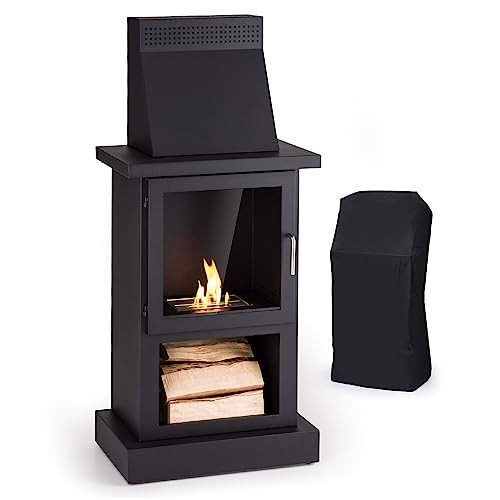Buzzwords De-Buzzed: 10 Other Ways For Saying Cheap Fireplace UK
Affordable Fireplaces in the UK: A Comprehensive Guide
Fireplaces have long been a centerpiece of warmth and comfort in homes, providing a cozy atmosphere during the chillier months. However, with numerous homes dealing with financial constraints, the demand for cheap fireplaces in the UK has actually gained significant traction. This post aims to explore numerous budget-friendly alternatives, factors to consider when buying, installation details, and maintenance suggestions to make sure longevity and security.
Types of Cheap Fireplaces
When looking for a budget friendly fireplace, a number of types are offered that deal with different spending plans and home styles. Below is a list of some typical classifications of inexpensive fireplaces:
1. Electric Fireplaces
- Overview: These fireplaces use electrical energy to produce heat and simulate the look of genuine flames.
- Pros: No emissions, easy installation, and adjustable heat settings.
- Cons: Higher electric expenses, not appropriate for all aesthetics.
2. Gas Fireplaces
- Overview: Rely on gas or gas to produce real flames.
- Pros: Efficient heat output, instantaneous heat, and typically included push-button controls.
- Cons: Requires gas line setup, which might sustain additional costs.
3. Wood-Burning Stoves
- Overview: These traditional fireplaces burn wood logs to produce heat and atmosphere.
- Pros: Lower running costs if wood is sourced in your area, genuine experience.
- Cons: Requires more maintenance, a chimney system, and sourcing fire wood.
4. Bioethanol Fireplaces
- Summary: Use bioethanol to create genuine flames without being connected to a flue.
- Pros: Portable, simple to set up, and produces little smoke.
- Cons: Limited heat output and can be costly if used regularly.
5. Inserts and Surrounds
- Overview: Inserts or surrounds are generally contributed to existing chimney spaces to update or enhance a fireplace.
- Pros: Cost-effective methods of upgrading an old fireplace, increased effectiveness.
- Cons: Initial installation expense might vary, and not all homes are suitable.
Table 1: Comparison of Cheap Fireplaces
Type
Typical Cost (₤)
Operating Cost
Setup Difficulty
Aesthetic Appeal
Electric
100 – 500
Low
Easy
Moderate
Gas
300 – 700
Moderate
Moderate to Difficult
High
Wood-Burning
150 – 600
Low to Moderate
Moderate to Difficult
High
Bioethanol
200 – 800
Moderate
Easy
High
Inserts/Surrounds
200 – 1,000
Varies
Moderate
High
Elements to Consider When Choosing a Cheap Fireplace
When choosing a cheap fireplace, a number of elements must be considered to make sure that the purchase lines up with your home's requirements and spending plan:
Space and Size
- Evaluate the size of the space where the fireplace will be installed. Larger spaces may require more powerful heating options, whereas smaller spaces might take advantage of compact electric or bioethanol models.
Fuel Type
- Pick in between electric, gas, wood, or bioethanol based upon schedule, personal preference, and regional regulations relating to emissions and safety.
Setup Requirements
- Consider whether the fireplace requires comprehensive installation work, such as venting and chimney construction, which can significantly increase costs.
Cost of Operation
- Compute the continuous fuel or electrical energy costs to preserve heat throughout the cold weather.
Visual Design
- Go with a fireplace that matches the existing decoration of your home, whether modern, traditional, or rustic.
Maintenance Tips for Your Fireplace
Once a cheap fireplace is installed, correct maintenance is vital for security and durability. Here are some vital upkeep tips:
- Schedule Annual Inspections: For gas and wood-burning fireplaces, it's important to have a yearly assessment to look for gas leaks or obstructions in the chimney.
- Regular Cleaning: Dust and maintain electric fireplaces and tidy out ash from wood-burning ranges to prevent fire risks.
- Appropriate Fuel Storage: For wood-burning ranges, store fire wood in a dry location to guarantee efficient burning and prevent mold development.
- Use Quality Fuel: Always use appropriate fuel for gas and bioethanol fireplaces to prevent excess soot and emissions.
- Install Carbon Monoxide Detectors: For gas or wood-burning models, install detectors to guarantee that any leakage of hazardous gases is rapidly recognized.
Frequently asked questions
1. What is the cheapest type of fireplace?
Electric fireplaces are typically among the most budget friendly choices, providing a series of costs that can fit most spending plans.
2. Can I set up a fireplace myself to save cash?
While some electric and bioethanol fireplaces can be quickly set up without professional help, gas and wood-burning designs typically require setup by a licensed service technician to ensure security.
3. For how long do electric fireplaces last?
Electric fireplaces can last for lots of years with correct care, typically around 10-15 years, depending on usage and the quality of the system.
4. What is the most efficient fireplace?
Gas fireplaces tend to be the most efficient, supplying instant heat with regulated emissions.
5. How do I know if my fireplace is safe to utilize?
Regular evaluations, appropriate cleaning, and guaranteeing that there are no blockages or leakages can help maintain security in any kind of fireplace.
Finding a cheap fireplace in the UK doesn't imply compromising on style or security. With Fireplace Sale of alternatives offered— from electric to wood-burning models— property owners can delight in a warm and welcoming atmosphere without breaking the bank. By understanding the various fireplace types, thinking about necessary aspects before purchasing, and maintaining the fireplace appropriately, individuals can invest sensibly for years of satisfaction.
